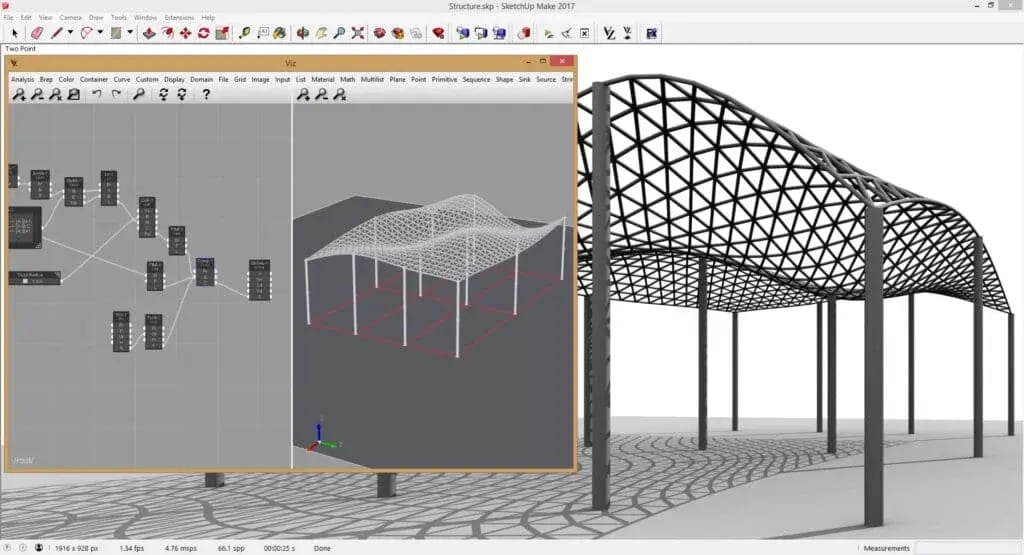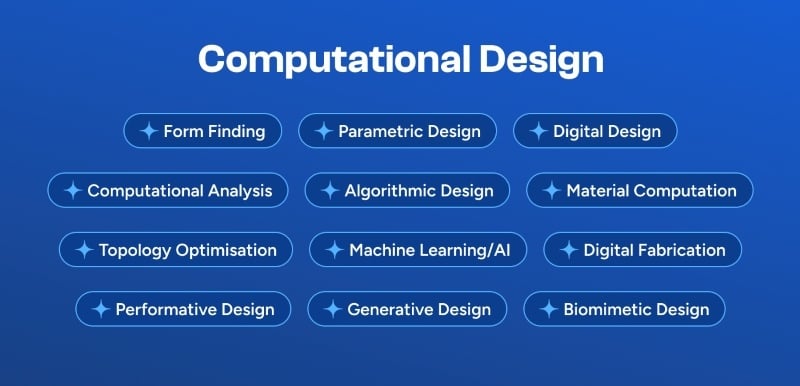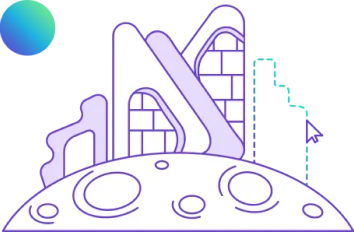How can Novatr's Computational Design Course Help Architects Land Their Dream Job?
%20(1).jpg)
Table of Contents
Computational design is the next big thing in architecture. As mentioned on Neuroject, 68% of architecture firms were actively seeking or implementing AI-driven tools and processes by 2024. This denotes a tilt in favour of digitalizing the Architecture, Engineering, and Construction (AEC) industry. Every year, about 24,000 architecture graduates from 400 colleges across India. But, the irony is that these individuals have strong theoretical knowledge but little know-how of the profession, which is now being governed by a tech-first approach. Therefore, it is essential for these young designers as well as the seasoned ones, to learn the applications of computational design for architects.
What Is Computational Design in Construction?
The name “computational design” suggests a correlation between designing and the use of computational technologies in doing so. It refers to algorithmic processes and digital tools to create, analyze, and optimize building designs and workflows.
Contrary to manual and CAD drafting that heavily rely on human input, computational design in architecture uses scripting, parametric modelling, and data-driven methods. It helps realize ambitious structural geometry, automate repetitive tasks, and simulate real-world performance conditions.
Generative design, parametric architecture, and digital fabrication are subsets of computational design that play their part during various stages of construction to support the project. It helps the entire AEC team to explore numerous design variations, improve efficiency, and make better informed decisions.
Which Software Power Computational Design Today?
Software are an architect’s ally. They are a tool to visualize and manage building construction and infrastructure projects. So, let’s have a look at the most promising computational design software that architects can consider learning:
1. Rhinoceros 3D
Rhino is a renowned software for its ability to handle complex building geometry and freeform surfaces. It is a go-to tool for parametric modeling, especially because of its beginner-friendly user interface. This gives architects the freedom to be bold and bring their unconventional ideas to life with precision.
2. Grasshopper
Grasshopper is the creative engine for parametric design explorations. Built as a plugin for Rhino, it allows architects to create models using a visual, drag-and-drop interface that does not mandate them to write codes. Professionals can tweak parameters in real-time and see the result in a fraction of minutes, a feature that makes design more intuitive and agile.
3. Dynamo Sandbox
Dynamo Sandbox can be used as a standalone software or as a plugin with Revit and Civil 3D. It presents a visual programming environment where designers can test their design logic, automate tasks, and play with geometry in a lightweight setting. This is highly useful for architects who like indulging in parametric forms and understanding the “why” and “how” behind them.
4. Marionette
Marionette by Vectorworks is a visual scripting tool in a BIM-friendly environment. It can seamlessly integrate into BIM drafting and workflows without using third-party plugins. This proves to be of great help for automating repetitive tasks, customizing elements, and creating parametric objects within a familiar interface. The interoperability of this generative design tool is a key reason for its popularity.
5. Python
Python is one of the most versatile algorithmic design tool in an architect’s toolkit. Once you get past the learning curve, Python opens doors to custom automation, geometry creation, data management and even machine learning. Architects can use it to modify drawings across various computational software and become an indispensable resource for the firm they work in.
Also Checkout: What are the top softwares power computational architecture design
What Will You Learn in Novatr’s Computational Design Course?
Novatr is an upskilling platform tailored for architecture and engineering professionals as well as students. It helps them become industry-ready with courses that are practical, future-forward, and implementable. The Master Computational Design Course in particular, is a program that offers a comprehensive understanding of new-age software and workflows that prep architects to deal with real-world challenges.
Here’s a deeper dive into the syllabus of this one-of-a-kind architecture design course.
- Understanding 3D modelling in Rhino and Grasshopper
- Digital fabrication and documentation of drawings
- Leveraging algorithmic designs and generative design
- 5 powerful industry tools — Grasshopper, Rhino 3D, Flux.ai, ComfyUI, and D5 Render.
- Master popular plugins like Paneling Tools, DeCoding Spaces, Anemone, Galapagos, Wallacei, LunchBox, Open nest and Horster Animation to create smarter, faster design workflows.
- Understand how to build parametric and generative design workflows used by top global firms.
- Learn how to automate repetitive design tasks, explore AI-driven creativity, and produce high-quality renders for presentations.
- Develop a professional computational design portfolio showcasing your project-based learning.
Earn dual certification from Novatr and NSDC (National Skill Development Corporation) upon completion, and step confidently into the world of future-ready architecture and design.
Disclaimer - Course details, including curriculum, duration, fees, and related information, are for informational purposes only and may change at the company’s discretion without prior notice. Please visit the official course page or contact our admissions team for the latest updates.
How Does Mentorship Improve Your Design Career?
Mentorship can be an accelerator in your computational design journey, especially given how fast the tools, techniques, and expectations evolve in this field. A good mentor helps you think critically about design problems, navigate difficulties, and apply computational thinking in ways that matter.
Instead of spending months figuring out workflows through trial and error, a mentor can show you smarter shortcuts, better logic structures, and real-world applications that aren’t taught in tutorials. Furthermore, mentors provide encouragement and perspective when you hit roadblocks in you career.
Beyond technical guidance, mentorship also shapes your professional development. It can help you identify the kind of computational designer you want to be, for example, a design strategist, an automation expert, or a digital fabricator. Mentors can point you to the right communities and learning paths that align with your goals.
How Can Computational Design Boost Your Job Prospects?
Top architecture companies like Zaha Hadid Architects (ZHA), Bjarke Ingels Group (BIG), and Populous are hiring for architects skilled in computational design. These firms have been using computational design software, roughly since the last 2 decades and have pioneered futuristic building design with its use. Therefore, signing up for computational design course can qualify you to land a job at such prestigious firms.
A certificate in computational design for architects unlocks opportunities of working overseas with the globally acclaimed designers. It can also make you stand out in a cut-throat competitive job landscape that’s fast getting saturated. Moreover, the benefits of computational design for architects also translate into a better salary. On an average, a computational designer at the start of their career can earn upto 1.5 or 2X the wage of a traditional architect.
How Is Novatr Different from Other Design Courses?
Novatr offers a holistic learning environment that is backed with constant support and practice relevant training. Here’s how the program can benefit you:
1. Industry-Relevant Curriculum
The course content is built around how computational design is used in real architectural practice. Each module is designed in collaboration with industry professionals to reflect workflows and problem-solving methods used in top architecture and design firms.
2. Cohort-Based Learning and Mentorship
Instead of passive video tutorials, learners engage in active learning through a cohort model. This means you learn alongside peers, exchange feedback, and grow together as a group. But, what really strengthens the experience is the mentorship where each learner gets access to one-on-one guidance from professionals working in global firms.
3. Case Studies and Projects
Every module of this digital design course is backed by case studies that show how computational tools are used in real architectural projects. This helps them create a portfolio-ready project that demonstrates both technical and design skills.
4. Certification and Career Support
Upon completion, learners receive dual certification from Autodesk and Novatr. Further,, Novatr offers ongoing career support through resume building guidance, LinkedIn profile optimization, and timely counselling. It helps learners position themselves effectively in the job market. The emphasis is on practical skills that translate directly into roles across computational design, BIM, and digital fabrication.
5. Placement Assistance
For learners looking to transition into the industry or upskill into computational roles, Novatr also provides structured placement assistance. This also includes portfolio building to help students put their best foot forward in architecture job interviews.
Why Go for the Computational Design Course by Novatr?
If you're an architect or engineer looking to stay relevant in a rapidly evolving industry, Novatr’s Computational Design course offers a practical and future-forward way to upgrade your skill set. Rather than focusing solely on tools, the course focuses on real-world application, mentorship from global professionals, and hands-on scripting and automation workflows. The computation design for architects course teaches students how to design smarter, take risks, and be progressive.
In Conclusion
Computational design in architecture is opening up an entirely new spectrum of career avenues for the profession. With skills in parametric modeling, algorithmic thinking, and automation, architects can now step into specialized positions like computational designer, BIM strategist, design technologist, or even product developer within multidisciplinary teams. For architects, it’s a chance to move from execution to innovation and redefine what their career can look like.
Explore the course today!
Also Visit our Resources Page to learn more about computational design and related technologies.

 Thanks for connecting!
Thanks for connecting!


.png)





.jpg)

